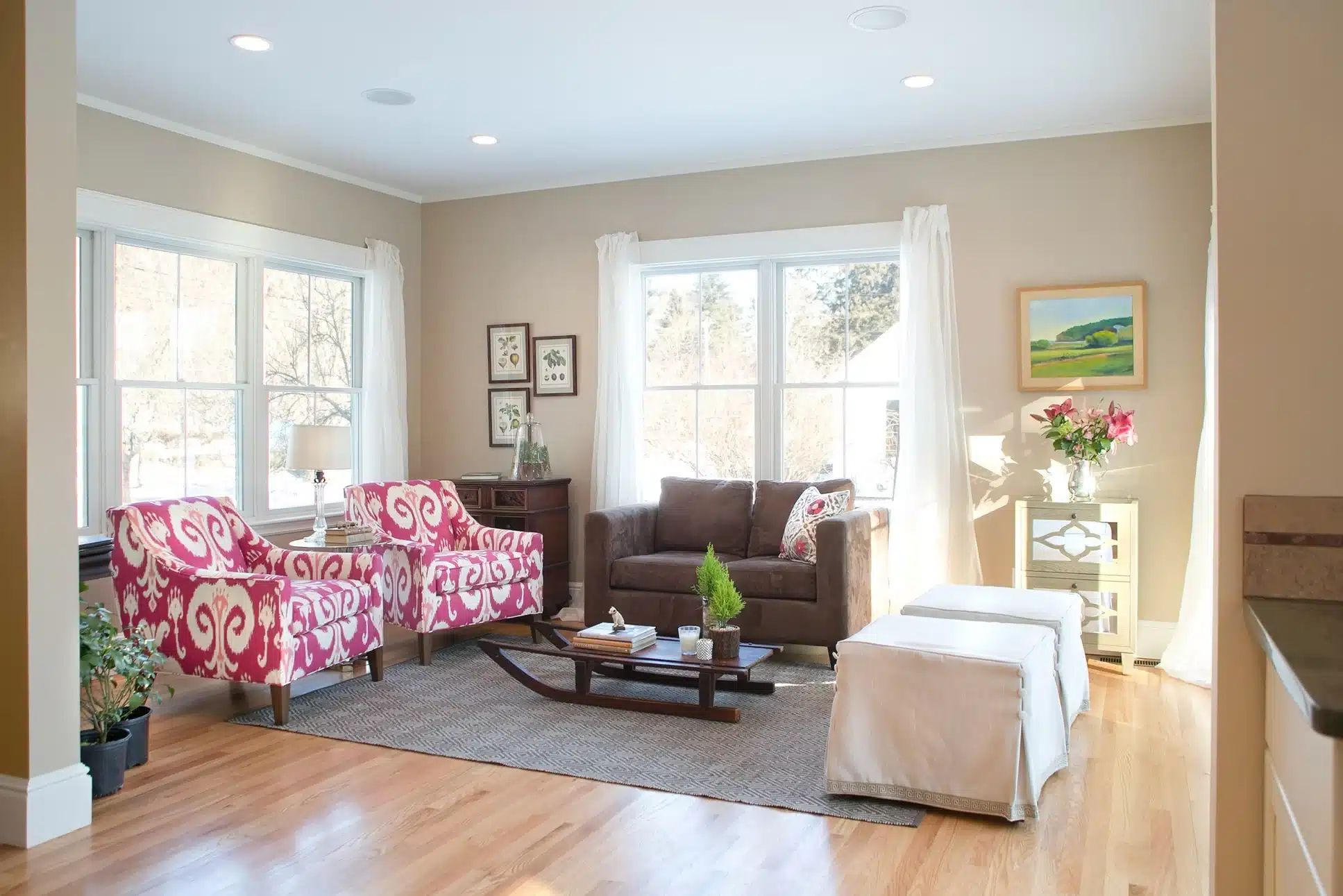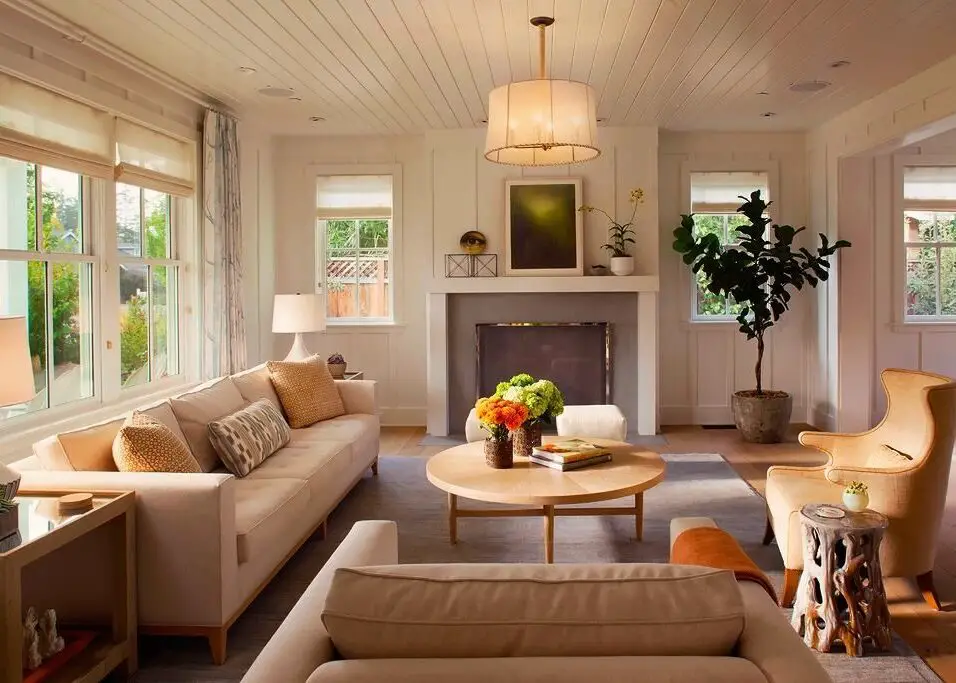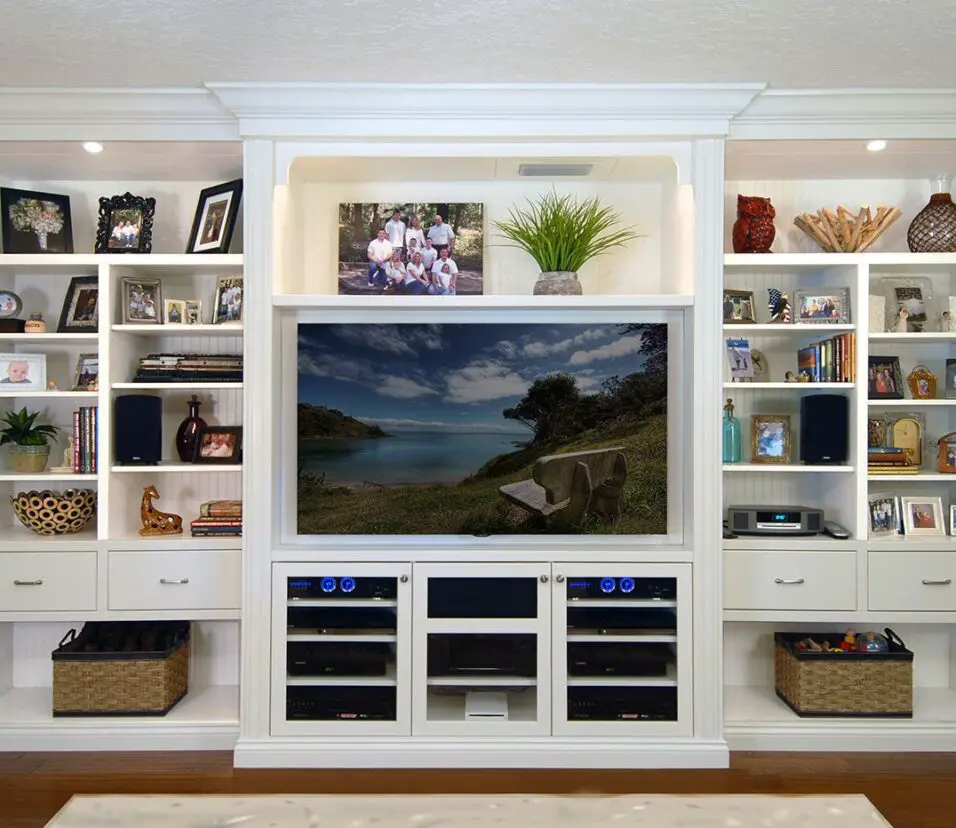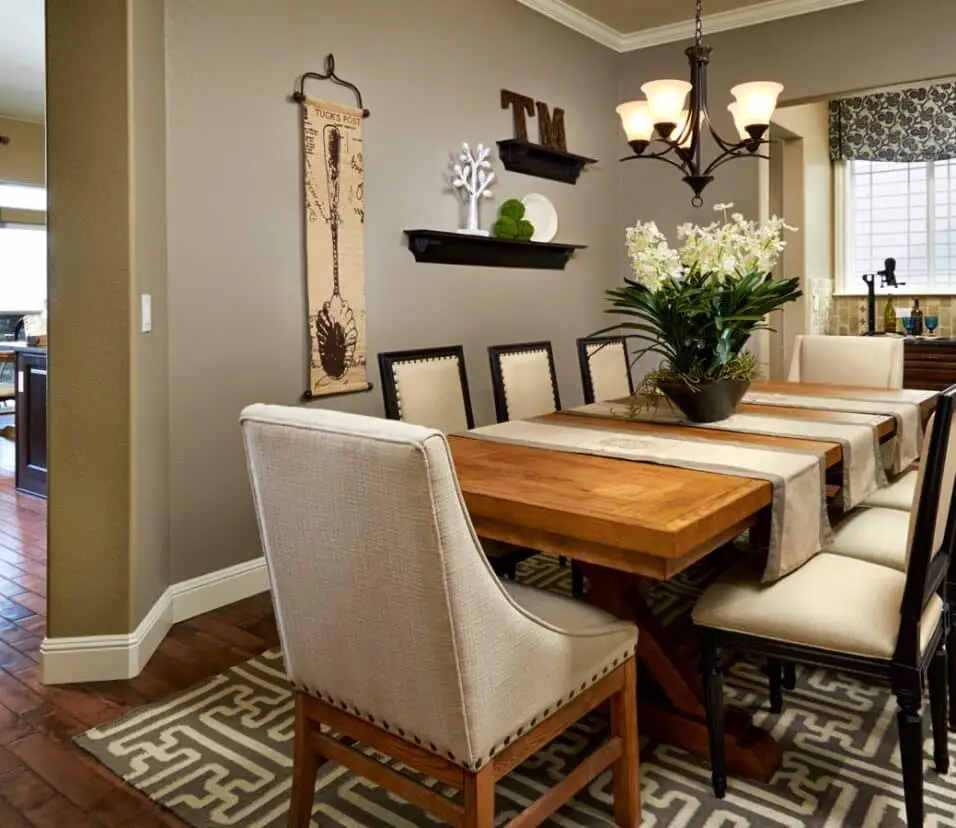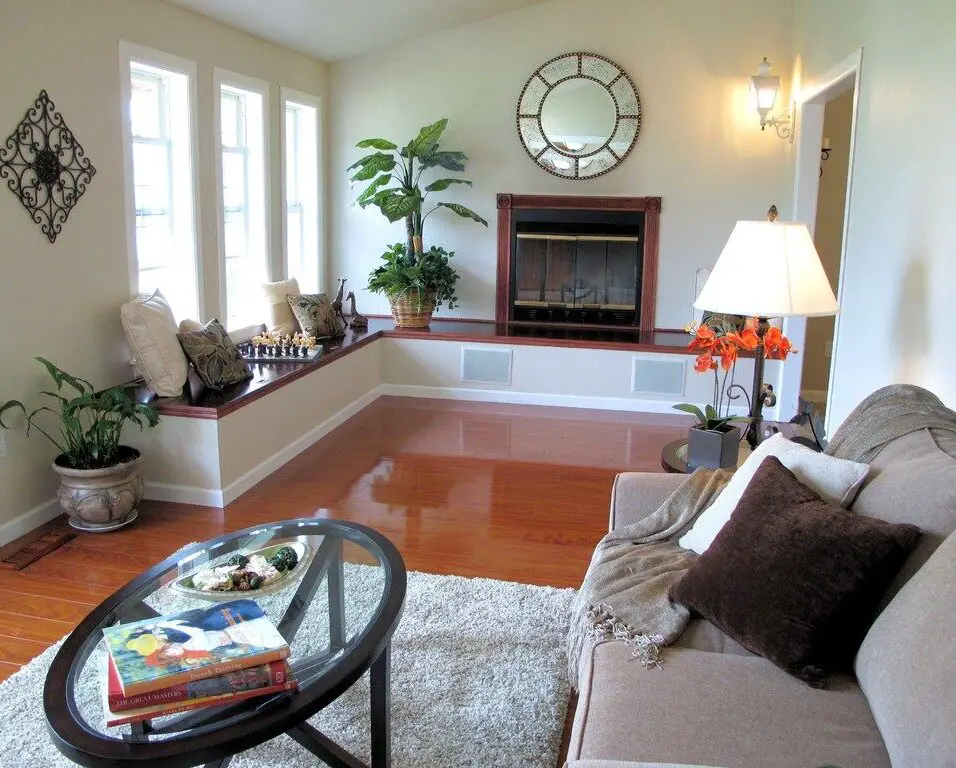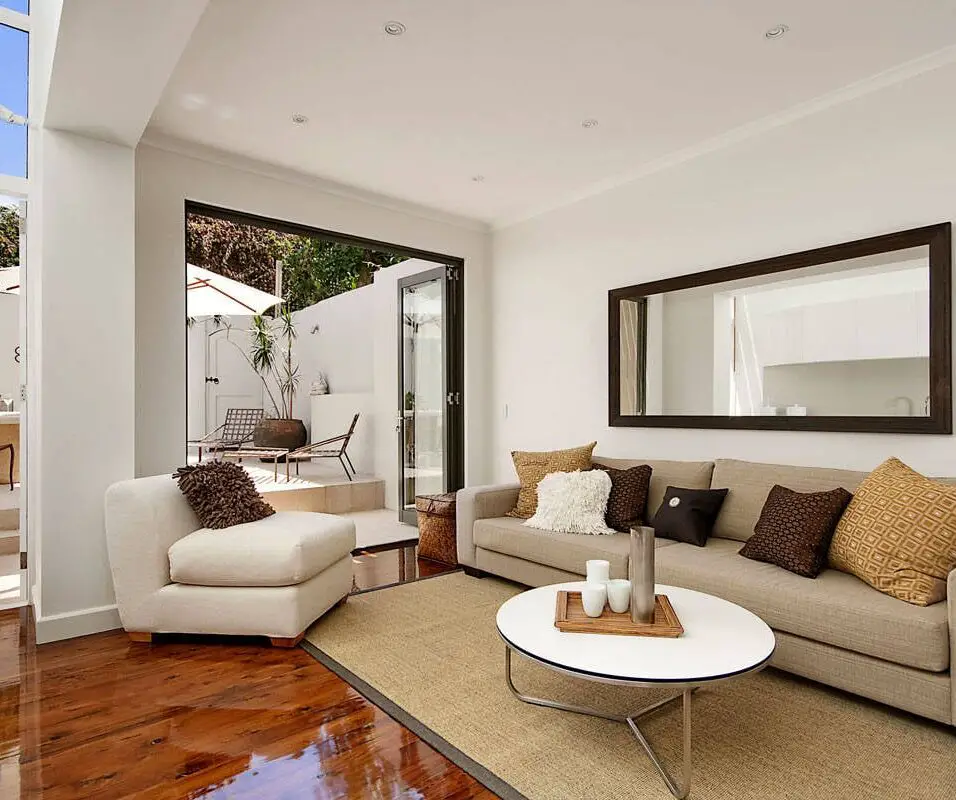What Is The Best Wall Color For A Living Room
Introduction
What Is The Best Wall Color For A Living Room: The amount and type of lighting in your living room should also be taken into account. Natural light can vary throughout the day, so it’s essential to observe how different wall colors look under different lighting conditions. If your living room lacks natural light, choosing light colors can help brighten the space. Conversely, if you have abundant natural light, you can consider bolder or darker shades. The wall color sets the overall mood and atmosphere of the living room. Consider the style you want to achieve—whether it’s modern, traditional, eclectic, or minimalist—and choose a color that aligns with that aesthetic.
Take into account the furniture, flooring, and other elements in your living room when selecting a wall color. Consider whether you want the walls to serve as a backdrop or a statement piece. Neutral colors like beige, gray, or off-white generally work well with a variety of furniture styles, allowing you to experiment with different accent colors through accessories, artwork, or curtains. Cool colors like blues and greens create a calming ambiance, while warm colors like reds and yellows can evoke a cozy and inviting feel.
The best wall color for your living room should reflect your personal taste and create a space that you feel comfortable and happy in. Consider colors that you are naturally drawn to and those that evoke positive emotions. Look for inspiration in magazines, online platforms, or even visit model homes to see how different wall colors can transform a space.
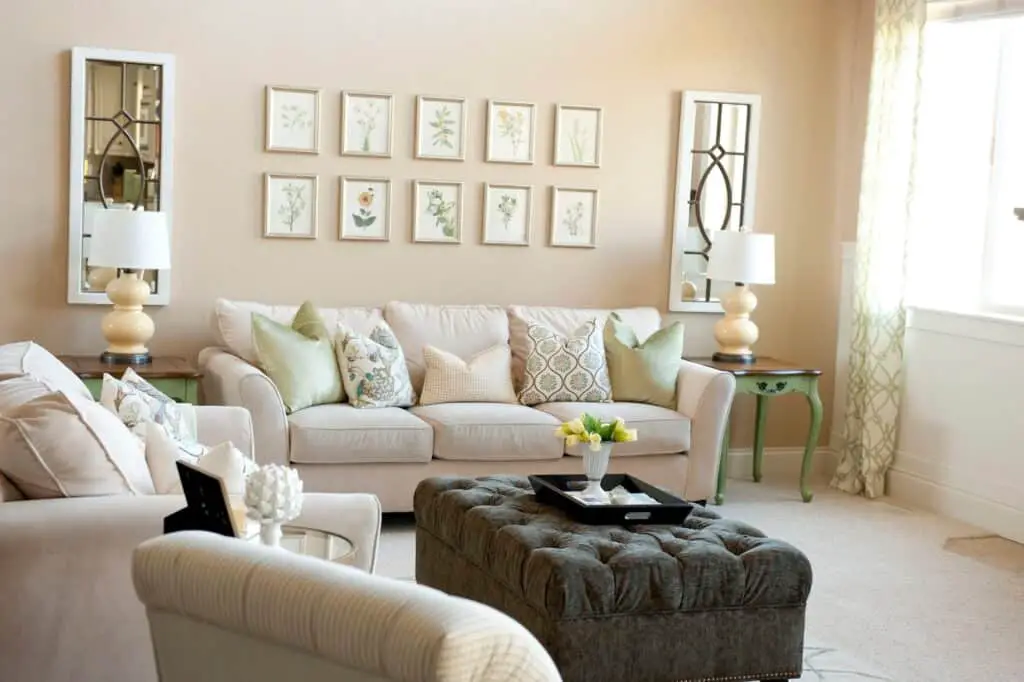
Which color is best in living room?
Opt for warm colors
This includes colors like gold, beige, tan, and peach. Paint the living room walls with these warm colors to give your living room a cozy feel. Wooden furniture and a minimalist décor can accentuate the rustic look of the space.
Neutral colors like beige, gray, and off-white are timeless options that work well in almost any living room. They create a versatile backdrop that allows you to easily change the room’s style and decor. Neutral colors can make a small living room feel more spacious and provide a calming and sophisticated ambiance. These hues also serve as a great base for incorporating accent colors through furniture, artwork, or accessories.
White is a classic and versatile color choice for a living room. It offers a clean and fresh look, making the space feel open and airy. White walls can also serve as a blank canvas, allowing you to experiment with different textures, patterns, and pops of color in your furniture and decor. However, it’s essential to consider lighting in the room, as white can appear stark and clinical if the space lacks natural light.
Cool colors like blues, greens, and purples have a calming and soothing effect, making them popular choices for living rooms. Lighter shades of these colors can create a serene and peaceful atmosphere, while darker hues add depth and richness. Cool colors are particularly suitable for living rooms where relaxation and tranquility are desired.
Warm colors such as reds, oranges, and yellows bring energy and warmth to a living room. These vibrant hues can create a cozy and inviting atmosphere, perfect for entertaining and socializing. However, it’s important to use warm colors in moderation, as they can be visually stimulating and may overpower the space if used excessively. Incorporating warm colors through accent walls or accessories can be a great way to add pops of vibrancy without overwhelming the room.
What colors brighten living rooms?
Go for pale shades of grey and blue for maximum lightening effect. If it’s warmth you’re after, don’t be afraid to use light terracotta or yellow paint colours – a sunny hue can brighten and warm a dark, dingy space. Just be careful not to clutter the room with brown furniture so the scheme doesn’t become overpowering.
White is a classic and foolproof choice for brightening any room. It reflects light effectively and creates a clean and fresh look. Opting for pure white or off-white shades can make the space feel brighter and more expansive. However, be mindful of the lighting in your living room, as too much white can sometimes appear stark or cold. Adding warmth through textures, fabrics, and accent colors can counterbalance the coolness of white.
Soft pastel colors, such as pale blues, pinks, and lavenders, have a soothing and airy quality that can brighten up a living room. These delicate shades reflect light and lend a gentle and serene atmosphere to the space. Pastels work well as wall colors, particularly in smaller living rooms, where they can create an illusion of openness and brightness.
Light neutral colors, such as beige, cream, and light gray, are excellent choices for brightening a living room. These colors have warm undertones that create a soft and inviting atmosphere while reflecting light to make the space appear more luminous. Light neutrals provide a versatile backdrop that pairs well with various furniture styles and allows you to experiment with different accent colors and textures.
Pale shades of yellow can bring a sunny and cheerful ambiance to your living room. Soft yellows evoke a sense of warmth and happiness and can make the space feel bright and inviting. However, be cautious not to choose overly vibrant or intense shades of yellow, as they may overwhelm the room. Opt for softer tones that promote a subtle brightness.
What colour is modern for living room?
Modern Living Room Colors
Living room color schemes don’t have to include tons of vibrant hues to pack in personality. A simple palette dominated by black and white gives off a sleek, modern atmosphere. Start with white walls and incorporate black in bold ways, such as on built-ins or trimwork.
Neutral colors such as white, gray, and beige are frequently used in modern living rooms. These colors provide a clean and timeless backdrop that allows other elements in the room to stand out. They create a sense of simplicity and sophistication, which are key aspects of modern design. Consider using different shades of neutrals to add depth and texture to the space.
Monochromatic color schemes involve using various shades of a single color. This approach creates a visually cohesive and modern look. For example, shades of gray, from light to dark, can be combined to achieve a sleek and contemporary atmosphere. Incorporate different textures and materials in the same color family to add interest and prevent the space from feeling too flat.
While modern design often embraces a neutral color palette, adding bold accents can create a striking and contemporary look. Consider incorporating pops of vibrant colors such as deep blues, emerald greens, or even a vibrant red or yellow. These bold accents can be introduced through furniture, artwork, or accessories, adding visual interest and personality to the living room.
Black is a powerful and dramatic color that can be used effectively in modern living rooms. It adds a sense of sophistication and elegance while providing a strong contrast against lighter elements in the room. Incorporate black through furniture pieces, accent walls, or decorative elements. However, it’s important to balance the use of black with lighter colors to prevent the space from feeling too heavy or dark.
What colour is best for living room ceiling?
A bright, white ceiling can create the illusion of more space and light, and makes a room look bigger than it actually is. On the other hand, using a bold ceiling colour, or the same colour as the walls in the room can add some drama and personality to a room, and make the space feel nice and cosy.
The height of your living room ceiling plays a significant role in color selection. If you have a low ceiling, choosing a lighter color, such as a soft white or a light neutral shade, can help create an illusion of height and make the room feel more spacious. On the other hand, if you have a high ceiling, you have more flexibility in color choices. You can consider using darker colors or even bold accent colors to add depth and drama to the space.
Consider the size of your living room and the amount of natural and artificial light it receives. Lighter ceiling colors, including whites and pale neutrals, can help reflect light and make the room feel brighter and more open. If your living room lacks natural light, a lighter ceiling color can help compensate for the lack of brightness. Conversely, if your living room receives ample natural light and has a large size, you can experiment with darker or bolder ceiling colors to create a sense of intimacy and coziness.
Take into account the texture and architectural details of your ceiling. If your ceiling has interesting textures, such as exposed beams or intricate moldings, a lighter color can help highlight and emphasize these features. Alternatively, if you have a smooth and plain ceiling, you can consider adding visual interest by using a contrasting or complementary color that enhances the overall design aesthetic.
The color of your ceiling should align with the design style and desired mood of your living room. For a classic and timeless look, white or off-white ceilings are often the preferred choice. They create a clean and fresh backdrop that complements various design styles. If you want to add a touch of drama or create a unique design statement, you can choose a color that contrasts with the walls or complements the overall color palette of the room. Deep blues, soft grays, or even metallic finishes can be considered to add visual interest and create a modern or contemporary look.
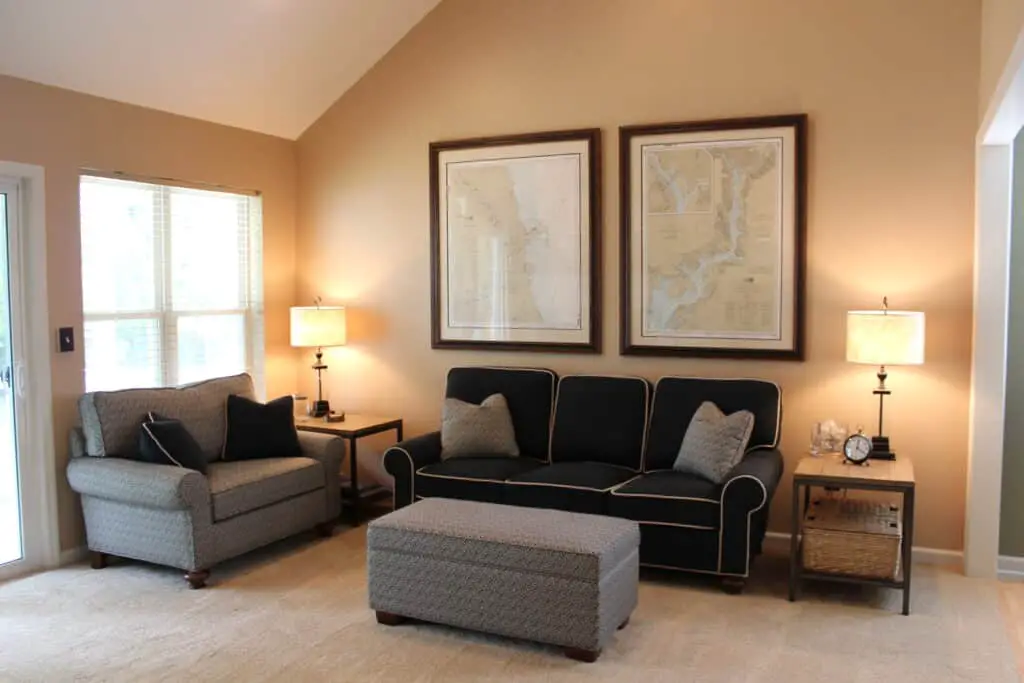
What colors are popular in living rooms?
Warm tones, like creamy beige, chocolate browns, rusty reds or desert-inspired hues, bring energy into a space and instantly make it feel more cozy. Cool tones, like popular crisp whites, classic gray, soothing greens and fresh blues, evoke feelings of calm and help small spaces feel larger.
Neutral colors like beige, gray, and off-white continue to be popular choices for living rooms. These hues provide a timeless and versatile backdrop that can easily adapt to different design styles and allow other elements in the room to stand out. Neutrals create a calming and sophisticated atmosphere, making the living room feel inviting and comfortable.
Soft shades of blue and green have gained popularity in living rooms, as they evoke a sense of tranquility and connection to nature. These colors can create a soothing and refreshing ambiance, making them well-suited for relaxation and unwinding. Light blues and greens also work well in coastal and contemporary design styles.
Earthy colors like warm browns, terracotta, and ochre have made a comeback in living room design. These hues bring a sense of grounding and warmth to the space, creating a cozy and inviting atmosphere. Earth tones can be incorporated through furniture, textiles, or accent walls, and they work well in a variety of design styles, including bohemian and rustic.
Rich jewel tones such as deep blues, emerald greens, and luxurious purples have become increasingly popular for adding depth and drama to living rooms. These bold colors create a sense of opulence and sophistication, making a striking statement in the space. Jewel tones can be used as accent colors through furniture, drapes, or artwork to add visual interest and vibrancy.
How do you color a living room?
Look for a niche to add extra color, or choose a larger wall that will get noticed. Pick a bold, contrasting color from a fabric in your living room. Or, go for a subtle accent by painting the wall in the same color family, but a tone darker than the rest of your walls.
Assess the amount of natural light that enters your living room. Natural light can affect how colors appear, so it’s important to take this into account. If your room receives ample sunlight, you have more flexibility with darker or bolder colors. For rooms with limited natural light, lighter shades can help brighten the space and make it feel more open.
Select a color palette that aligns with your vision and complements your existing furniture and decor. Consider using a combination of three main colors: a primary color, a secondary color, and an accent color. The primary color will be the dominant color in the room, covering the majority of the walls. The secondary color can be used for furniture upholstery or larger accessories. The accent color adds pops of color through smaller accessories or decor elements.
Before committing to a color, it’s essential to test paint samples on your walls. Paint small sections of the walls with your chosen colors and observe them in different lighting conditions. This will help you visualize how the colors will look in your specific space and make any necessary adjustments.
Determine which walls will be painted with the primary color and which will feature secondary or accent colors. Consider focal points and architectural features, such as a fireplace or a feature wall, when deciding where to apply colors. Accent walls can create visual interest and serve as a focal point in the room.
How can I beautify my living room?
How can I beautify my living room? Beautifying your living room can be easily achieved with a few steps. Try to incorporate more color using pillows, throws, and decorative elements to break with the monochromatic look of the space. Use furniture to decorate as well by choosing tables and chairs with ornate legs.
Assess the layout of your living room and consider how the furniture is arranged. Ensure that the furniture placement allows for easy movement and conversation. Experiment with different layouts to find the most functional and aesthetically pleasing arrangement.
Establish a focal point in your living room to draw attention and anchor the space. This could be a fireplace, a large piece of artwork, a statement furniture item, or an accent wall. Arrange the furniture and decor elements around the focal point to create a cohesive and visually pleasing arrangement.
Good lighting can greatly enhance the beauty of a living room. Maximize natural light by keeping windows unobstructed and using sheer curtains. Incorporate a mix of ambient, task, and accent lighting to create layers of light that add depth and ambiance to the room. Consider using table lamps, floor lamps, and pendant lights strategically to create the desired atmosphere.
Choose a color scheme that reflects your personal style and creates a harmonious and visually appealing living room. Consider the mood you want to evoke and select colors accordingly. Neutral colors create a timeless and versatile backdrop, while bold or muted tones can add personality and vibrancy. Experiment with different color combinations for walls, furniture, and decor elements.
What colour makes a living room look bigger?
From favorite paint colors to specialized design advice, Benjamin Moore’s color and design experts have the answers to a common homeowner question: How do I make a small room look bigger and brighter? Lighter paint colors like off-whites, light neutrals, pales, and pastels give the illusion of larger, brighter rooms.
Light and neutral colors are known for their ability to create the illusion of space. Shades such as whites, creams, soft beiges, and light grays reflect more light, making the walls recede visually and giving the impression of a larger living room. These colors also have a clean and fresh aesthetic that contributes to a spacious feel.
Soft pastel colors, such as light blues, pale pinks, and muted greens, can make a living room feel bigger. These gentle hues create a calming and airy atmosphere, expanding the perceived space. Pastels work particularly well in combination with white or light neutral accents, furniture, and decor.
A monochromatic color scheme involves using varying shades of a single color. When applied to a living room, this approach creates a cohesive and uninterrupted flow that visually expands the space. By using different tones and shades of the same color, you achieve a layered effect that adds depth and openness.
Lighter shades of cool colors work especially well in small living rooms, as they promote an airy and open feel. Consider using these colors on walls, upholstery, or accents to enhance the perceived size of the room.
While light and neutral colors are effective for making a living room look bigger, adding contrasting accents can create visual interest and depth. Consider incorporating darker or bolder colors through furniture, rugs, or artwork. The contrast between the main color and these accents can add a sense of dimension and make the space feel more expansive.
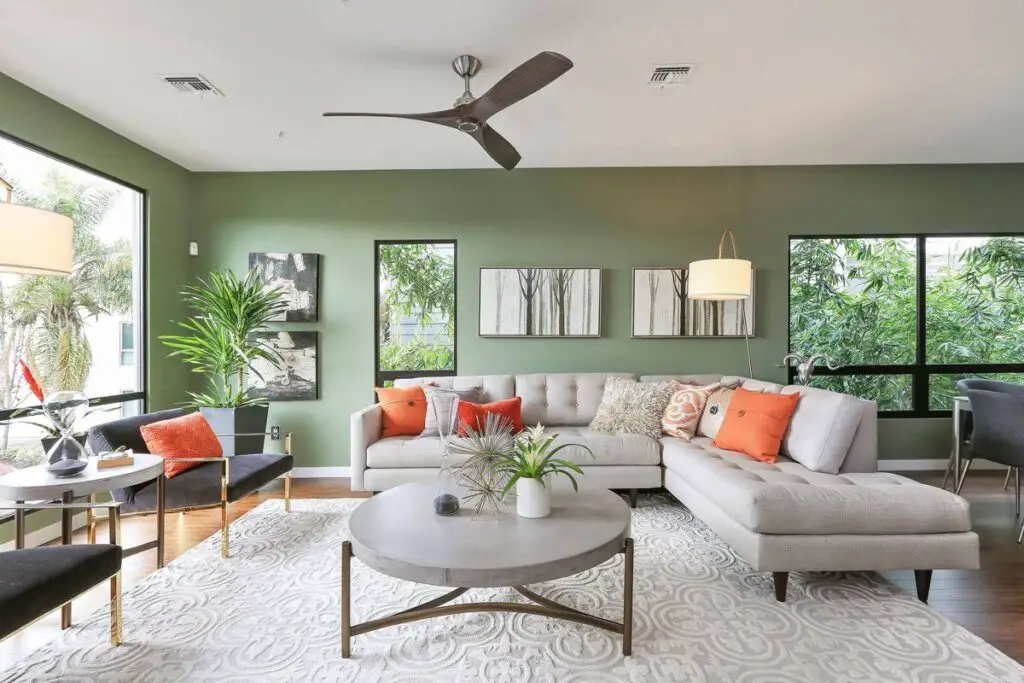
Conclusion
Take into account any unique architectural features or focal points in your living room. If you have beautiful molding, trim, or architectural details, a contrasting wall color can help highlight and enhance these elements, creating a visually striking and sophisticated look. Different colors can evoke specific emotions and moods. Understanding color psychology can help guide your decision. For example, cool colors like blues and greens promote a sense of calmness and relaxation, making them ideal for spaces where you want to unwind.
Consider how the wall color of your living room walls blend with the colors of adjoining spaces, such as hallways or connected rooms. Maintaining a cohesive color palette throughout your home can create a harmonious flow and a sense of unity. Take into account the overall color scheme and consider complementary or coordinating shades for a cohesive look. Warm colors like reds and yellows can create a cozy and energizing atmosphere, perfect for lively gatherings and socializing.
Keeping up with current design trends can offer inspiration and ideas for your living room. However, it’s important to balance trends with your personal style and preferences. Trends come and go, but a color that resonates with you will make you feel comfortable and content for years to come. Don’t be afraid to incorporate your own unique flair and infuse the space with colors that reflect your personality.



